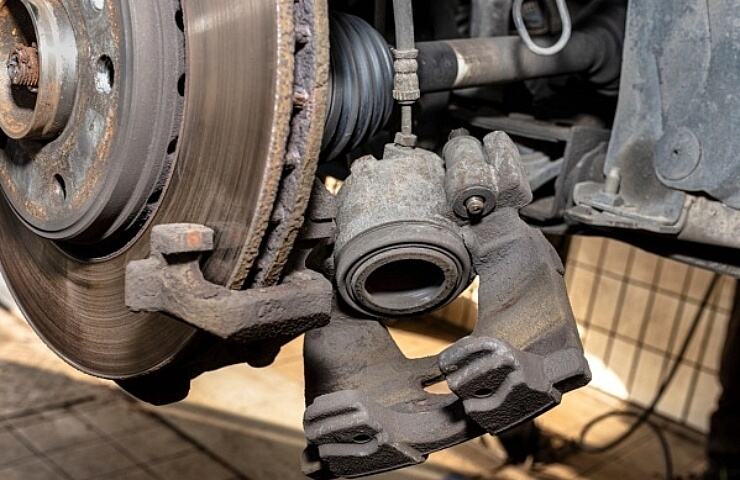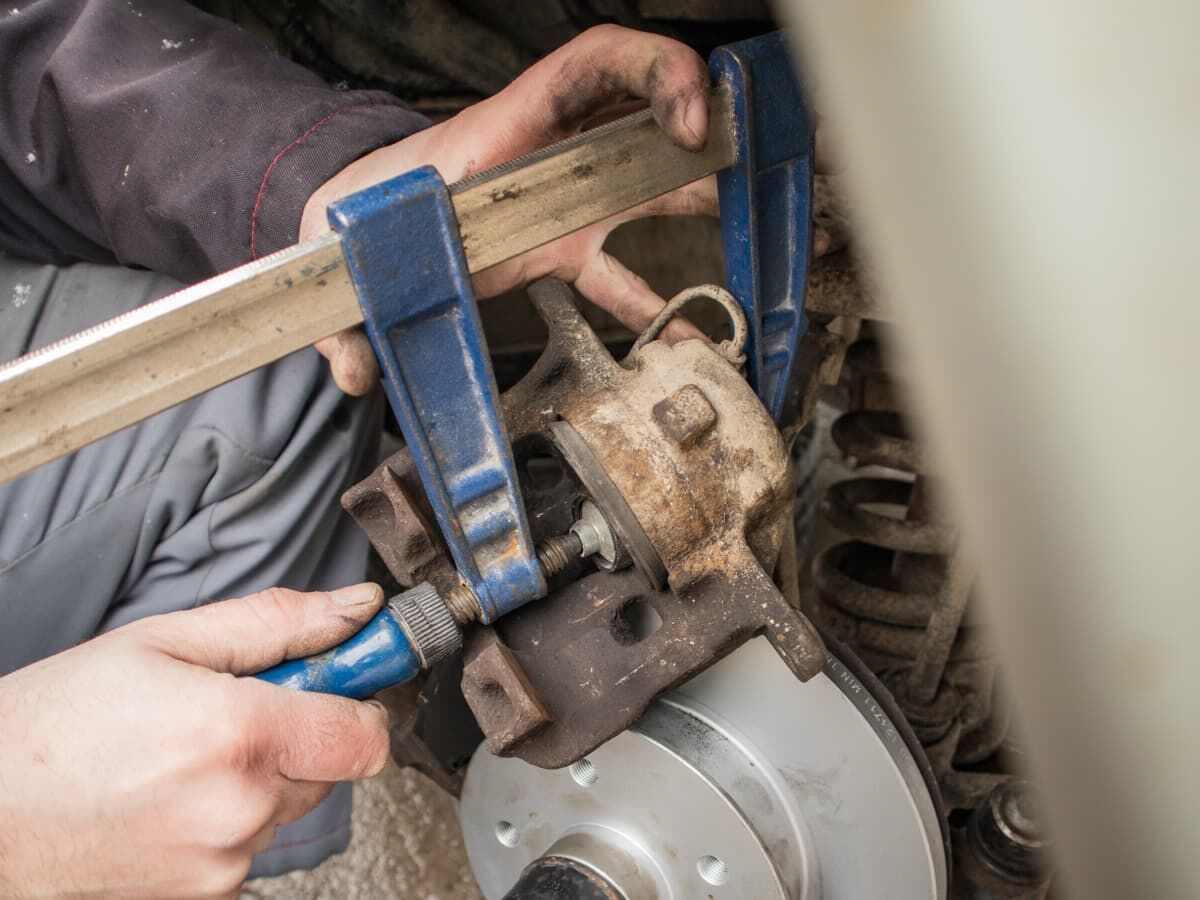Brake caliper pistons must retract smoothly to accommodate new brake pads. However, modern vehicles with ABS and electronic parking brakes (EPB) often lock pistons in place, making manual retraction nearly impossible. Forcing pistons back with C-clamps or screwdrivers risks damaging seals, dislodging brake fluid reservoirs, or triggering ABS fault codes. HTL’s electronic caliper reset kits solve these challenges with intelligent, vehicle-specific programming, ensuring safe, code-free piston retraction.
Today’s integrated braking systems demand precision tools. Key challenges include:
ABS/EPB Lockouts: Electronics prevent piston movement without proper initialization.
Uneven Retraction: Pistons in dual or quad-piston calipers must retract simultaneously.
Sensor Damage: Rough handling ruins caliper position sensors, costing $300+ to replace.
Symptoms of Improper Retraction:
Brake drag causing overheating and pad glazing.
Spongy pedal feel due to trapped air in the system.
ABS warning lights from disrupted sensor signals.

HTL’s tools bridge the gap between mechanical force and electronic control:
OBD-II Integration: Communicates with ABS/EPB modules to release piston locks.
Dual-Mode Operation:
Auto-Retract Mode: Slowly reverses pistons via electric motor (0.1 mm/s precision).
Manual Assist: Adjustable pressure for seized pistons, with force limiters to prevent damage.
Multi-Piston Sync: Retracts up to 4 pistons evenly via magnetic position sensors.
Wireless Updates: Compatibility for 95% of 2010+ vehicles via cloud-based software.
1. Prepare the Vehicle
Connect HTL’s tool to the OBD-II port and select the vehicle make/model.
For EPB systems: Use the tool’s “Service Mode” to deactivate the parking brake.
2. Retract Pistons Electronically
Choose Auto-Retract Mode; the tool communicates with the ABS module to unlock pistons.
Monitor progress via the LCD screen—pistons retract evenly without force.
3. Address Seized Pistons
For corroded pistons, switch to Manual Assist Mode.
Apply gradual pressure (max 500 N) while the tool vibrates gently to break corrosion.
4. Rebuild and Bleed
Clean and lubricate piston surfaces before reinstalling pads.
Use HTL’s integrated bleeder to purge air without disconnecting hoses.
5. Reset Systems
Exit “Service Mode” and clear ABS/EPB codes via the tool.
Test drive to confirm smooth braking and no warning lights.

| Factor | C-Clamps/Screwdrivers | HTL Electronic Kits |
|---|---|---|
| Piston Damage Risk | High (uneven force bends pistons) | Near-zero (controlled movement) |
| ABS Compatibility | None (triggers fault codes) | Full integration (previons codes) |
| Time per Caliper | 15–30 minutes (trial and error) | 5–10 minutes (automated process) |
| Multi-Piston Handling | Poor (uneven retraction) | Perfect sync via sensors |
Forcing pistons dry: Always lubricate to prevent seal tears.
Ignoring EPB protocols: Retracting pistons without deactivating EPB damages motors.
Skipping system resets: Unresolved ABS codes can disable safety features.
Future-proof: Regular updates cover new EV and hybrid models.
Versatile: Works on sliding, fixed, and floating calipers.
Cost-effective: Avoids $500+ caliper replacements from botched retractions.
Brake caliper piston retraction isn’t a brute-force task—it’s an electronic dialogue. HTL’s tools decode your vehicle’s needs, delivering safe, code-free repairs that keep customers and cars rolling smoothly.
Upgrade your brake service toolkit with HTL’s electronic reset kits. [Shop Now] or schedule a live demo to see precision in action!
Q: Can HTL’s tool retract pistons on EVs with regenerative braking?
A: Yes—compatible with Tesla, Rivian, and other EVs via OBD-II.
Q: How often should caliper pistons be serviced?
A: Every brake pad change or 2 years to prevent seizing.
Q: Does the tool work without a vehicle battery?
A: No—requires 12V power to communicate with ABS modules.
With HTL’s technology, brake service becomes a seamless blend of power and precision. 🚗🔧🛑
